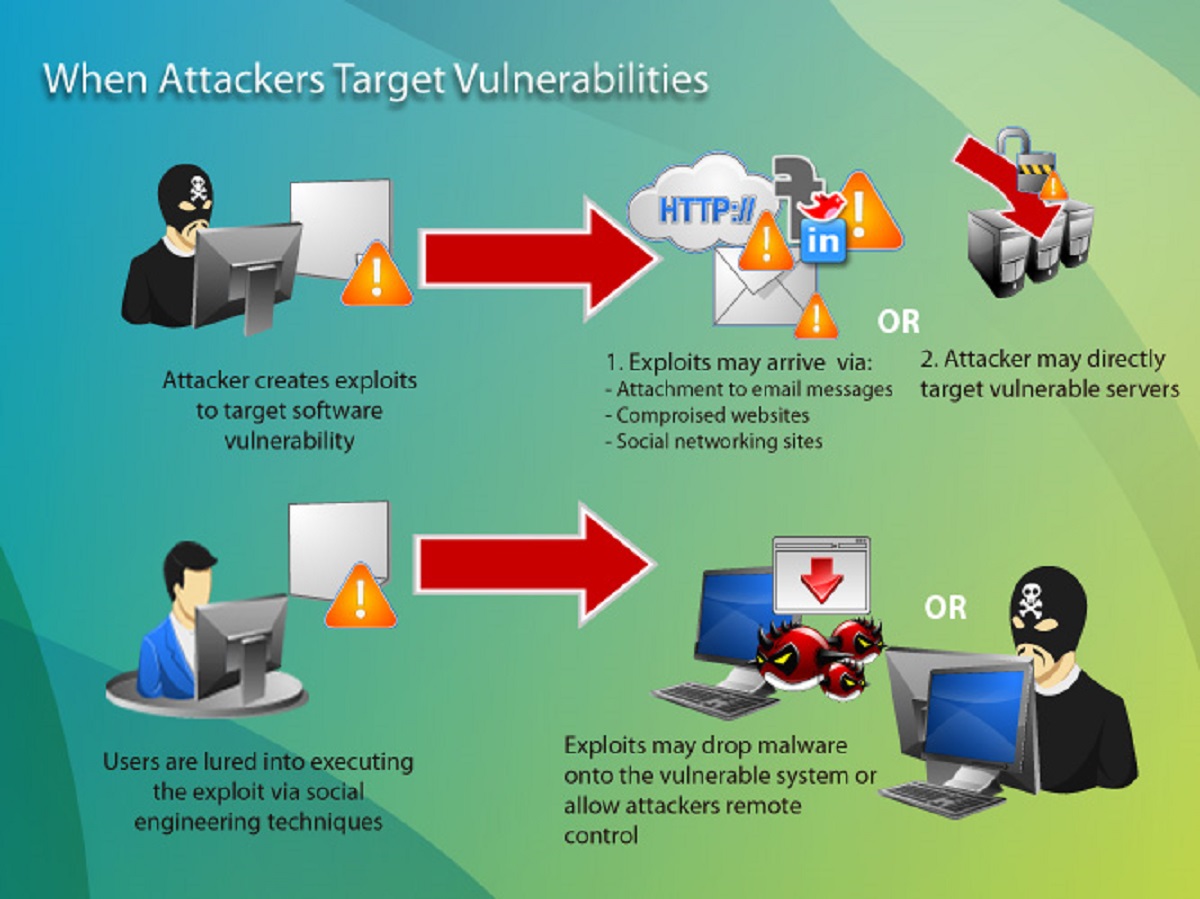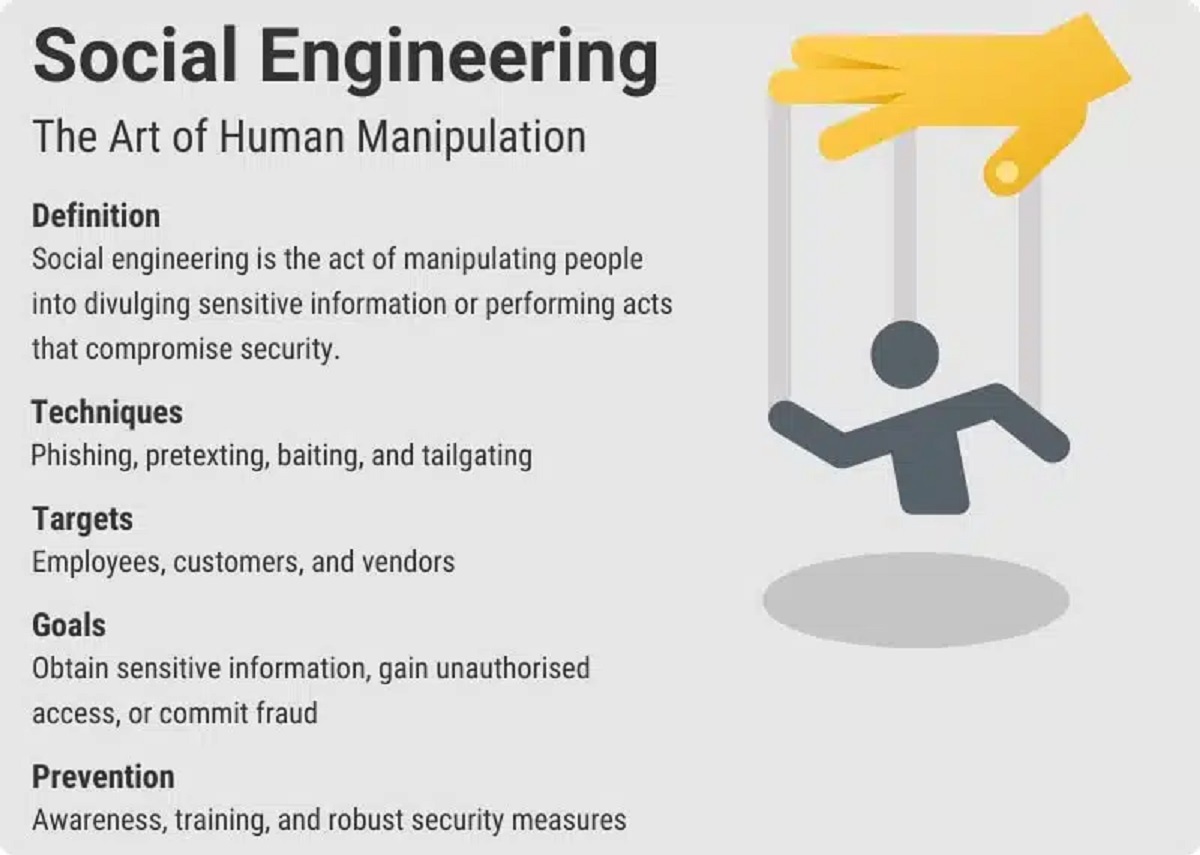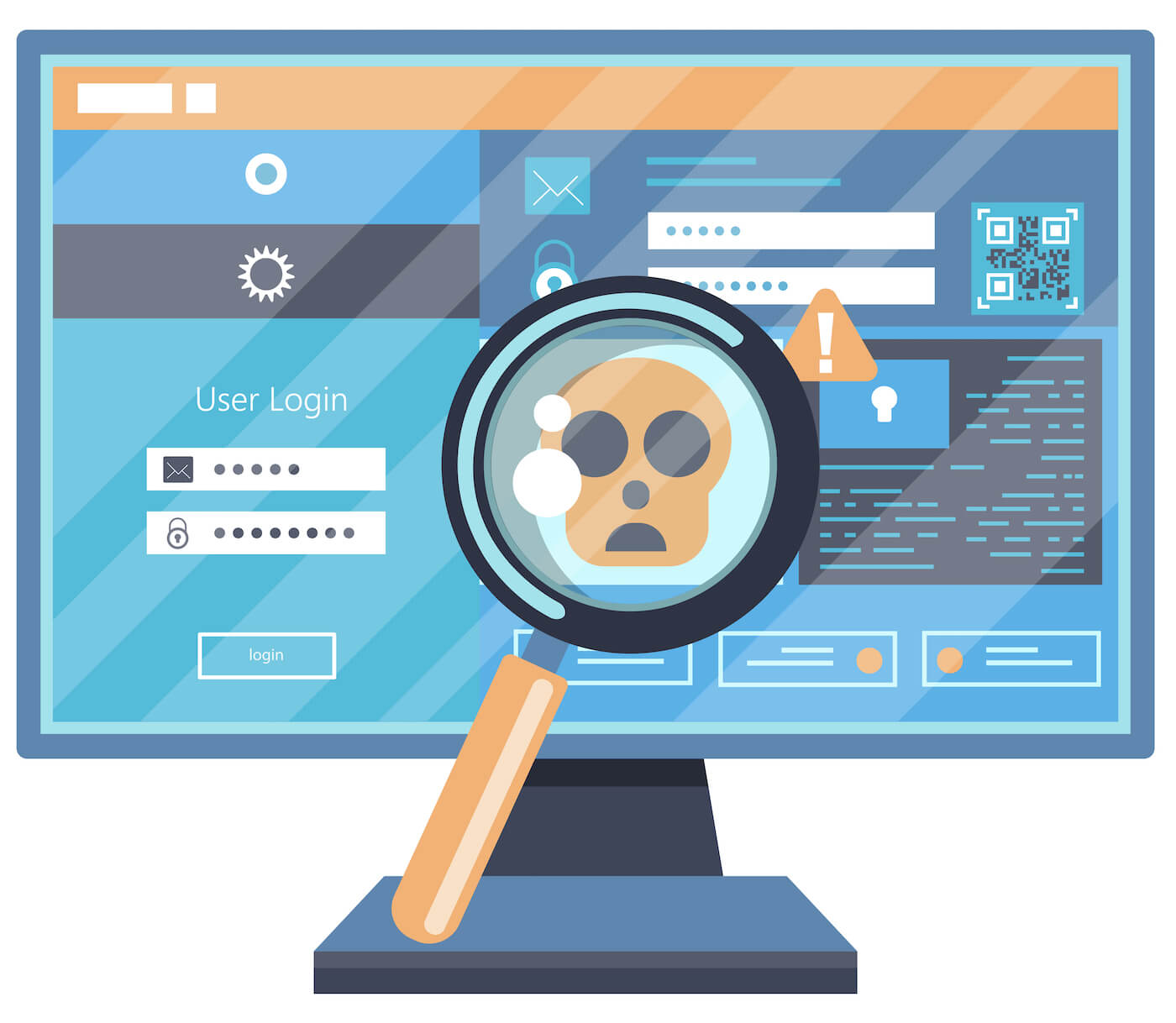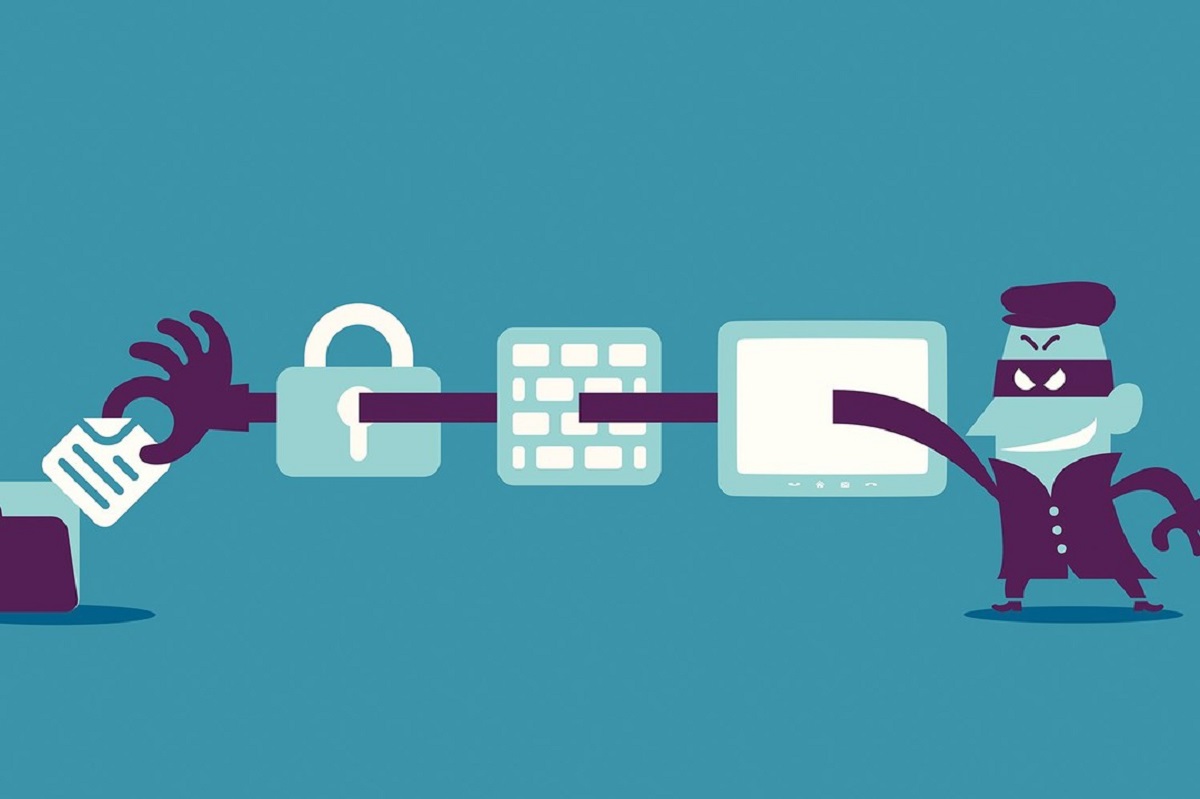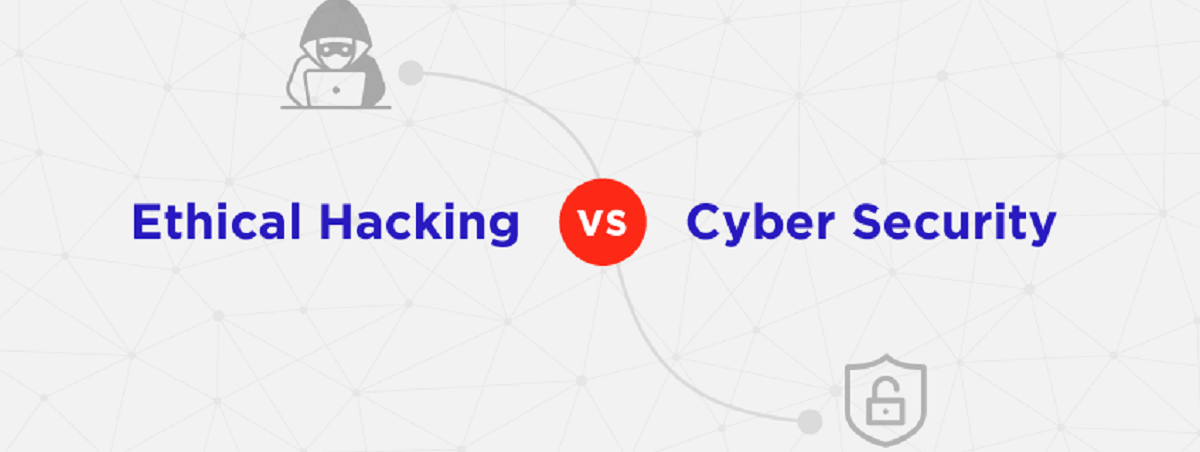Introduction
Welcome to the world of cybersecurity exploits, where invisible threats lurk behind the digital realm. As our lives become increasingly intertwined with technology, the need to secure our online presence has never been more critical. Cybersecurity exploits, a term often heard but not always understood, play a pivotal role in this ongoing battle to protect our digital assets and personal information.
But what exactly is a cybersecurity exploit? In simple terms, it refers to a malicious act or technique that takes advantage of vulnerabilities in computer systems or networks to gain unauthorized access, disrupt operations, or steal sensitive data. These exploits can come in various forms, ranging from sophisticated hacks engineered by skilled cybercriminals to more straightforward tactics that exploit human error.
Understanding cybersecurity exploits is not just the responsibility of security professionals and IT experts. It is crucial for anyone who interacts with technology, whether at work or in their personal life. By gaining knowledge about these threats, individuals can make informed decisions, adopt best practices, and take proactive measures to safeguard their digital identities and assets.
In this article, we will explore the world of cybersecurity exploits, shedding light on their types, impact, discovery, and prevention. By delving into the intricacies of this ever-evolving landscape, we aim to empower you with the knowledge to protect yourself and stay one step ahead of cyber threats.
What is a cybersecurity exploit?
A cybersecurity exploit refers to a method or technique used by hackers or cybercriminals to gain unauthorized access to computer systems or networks, exploit vulnerabilities, and carry out malicious activities. These exploits take advantage of weaknesses in software, hardware, or human behavior to compromise the security and integrity of digital systems.
Exploits can vary in complexity, targeting different layers of a system’s architecture, including the operating system, applications, network protocols, or even the human element through social engineering tactics. Some common examples of cybersecurity exploits include:
- Buffer Overflow: This occurs when a program attempts to store more data in a buffer than it can handle, causing it to overwrite adjacent memory areas. Hackers can exploit this vulnerability to execute arbitrary code or crash the system.
- SQL Injection: By injecting malicious SQL commands into a vulnerable application’s database query, hackers can manipulate the database and gain unauthorized access to sensitive information.
- Phishing: A phishing exploit involves luring unsuspecting individuals into revealing their sensitive information, such as passwords or credit card details, by masquerading as a trustworthy entity through email, phone calls, or fake websites.
- Zero-Day Attacks: These exploits leverage vulnerabilities that are unknown to software vendors and, therefore, do not have any patches or defenses available. Attackers can exploit these vulnerabilities to launch targeted attacks before fixes are developed.
It is important to note that cybersecurity exploits are not limited to attacking the technical aspects of a system. They can also exploit human vulnerabilities like naivety, carelessness, or lack of awareness. For instance, hackers may use social engineering techniques to trick individuals into providing sensitive information or performing actions that compromise security.
The ever-evolving nature of technology means that new exploits are continuously being discovered and exploited by malicious actors. Therefore, it is crucial for organizations and individuals to stay updated on emerging threats, maintain robust security measures, and practice proper cybersecurity hygiene to thwart potential exploit attempts.
The importance of understanding cybersecurity exploits
In today’s digital landscape, understanding cybersecurity exploits is crucial for individuals, businesses, and organizations of all sizes. Here are some reasons why:
1. Protection against attacks: By understanding how cybersecurity exploits work, individuals and organizations can proactively implement effective security measures to guard against potential attacks. This includes regularly updating software, applying patches, using strong passwords, employing secure network configurations, and being vigilant against social engineering tactics.
2. Early detection and response: Knowledge about cybersecurity exploits enables security professionals to identify signs of an ongoing attack or breach. By recognizing the techniques and tactics used by hackers, organizations can develop detection systems and response plans to mitigate the impact of an exploit and minimize potential damage or loss.
3. Effective risk management: Cybersecurity exploits pose significant risks to businesses and individuals. Understanding these risks allows organizations to prioritize their security efforts and allocate resources effectively. It helps them identify critical assets, assess vulnerabilities, and evaluate the potential impact of exploits on their operations.
4. Compliance with regulations: Many industries and jurisdictions have specific cybersecurity regulations and requirements. By understanding cybersecurity exploits, organizations can align their security practices with these regulations, ensuring compliance and avoiding penalties or legal consequences.
5. Safeguarding sensitive data: Data breaches resulting from cybersecurity exploits can lead to the exposure of personal, financial, or confidential information. Understanding exploits helps organizations implement security measures that protect sensitive data from unauthorized access, ensuring the privacy and trust of their customers and stakeholders.
6. Enhanced incident response: In the event of a cybersecurity incident, understanding exploits allows security teams to conduct thorough investigations, analyze attack patterns, and develop effective incident response strategies. This helps to minimize the impact, recover from the incident, and learn from the experience to prevent future exploits.
Ultimately, understanding cybersecurity exploits empowers individuals and organizations to take a proactive stance in their security posture. It enables them to stay ahead of evolving threats, fortify their defenses, and safeguard their digital assets in an increasingly interconnected world.
Common types of cybersecurity exploits
Cybercriminals utilize various tactics and techniques to exploit vulnerabilities in computer systems and networks. Understanding these common types of cybersecurity exploits is essential for recognizing and defending against potential threats. Here are a few notable examples:
1. Malware: Malware, short for malicious software, is a broad category that encompasses different types of malicious code. This includes viruses, worms, ransomware, and spyware. Malware exploits vulnerabilities in systems or human behavior to infiltrate devices, steal data, or disrupt operations.
2. Phishing: Phishing exploits attempt to deceive individuals into revealing sensitive information, such as usernames, passwords, or credit card details. This is often accomplished through deceptive emails, text messages, or fake websites that impersonate trusted entities.
3. Denial of Service (DoS) Attacks: A DoS attack aims to flood a system or network with an overwhelming amount of traffic, causing it to become inaccessible or unresponsive to legitimate users. By exploiting system resources, attackers can render websites or online services unusable.
4. SQL Injection: SQL injection attacks manipulate a website’s database by injecting malicious SQL code into input fields. This allows attackers to bypass login credentials, view, modify, or delete data, or execute arbitrary commands on the database server.
5. Cross-Site Scripting (XSS): XSS attacks occur when malicious code is injected into trusted websites or web applications. When unsuspecting users visit these compromised pages, the injected code is executed in their browsers, allowing attackers to hijack user sessions, steal information, or deliver malware.
6. Man-in-the-Middle (MitM) Attacks: MitM attacks intercept communication between two parties, allowing attackers to eavesdrop, modify, or inject data. This is often achieved by compromising network devices, exploiting unsecured Wi-Fi connections, or compromising public key infrastructure.
7. Zero-Day Exploits: Zero-day exploits target vulnerabilities that are unknown to software vendors or for which no patches or mitigations are available. Attackers leverage these vulnerabilities to exploit systems before defenses can be developed.
It is important to note that this is not an exhaustive list, as new types of exploits emerge regularly. To stay protected, individuals and organizations must remain vigilant, educate themselves about evolving threats, and adopt security best practices.
The anatomy of a cybersecurity exploit
A cybersecurity exploit typically consists of several key components that work together to compromise a system or network. Understanding the anatomy of an exploit is crucial for recognizing the different elements involved and the potential impact they can have. Here are the main components:
1. Vulnerability: Every exploit begins with a vulnerability—a weakness or flaw within a system or application. Vulnerabilities can stem from programming errors, improper configurations, or design flaws. These vulnerabilities create an entry point for attackers to exploit and gain unauthorized access.
2. Exploitation Technique: Once a vulnerability is identified, attackers employ specific techniques to exploit it. These techniques can vary widely depending on the nature of the vulnerability and the attacker’s objectives. Common exploitation techniques include buffer overflows, SQL injections, and remote code executions.
3. Payload: A payload refers to the malicious code or data that is delivered and executed as part of the exploit. This can include malware, scripts, or commands that allow attackers to take control of the compromised system, escalate privileges, or exfiltrate sensitive information.
4. Delivery Method: Attackers need a means to deliver their exploit to the target system or network. This can be achieved through various channels, such as email attachments, compromised websites, malicious links, or infected removable devices. Social engineering techniques may also be utilized to trick users into executing the exploit unknowingly.
5. Command and Control (C2): Once an exploit is successfully deployed, attackers may establish a command and control infrastructure to maintain control over the compromised system. This allows them to remotely issue commands, upload additional malware, or exfiltrate data without detection.
6. Covering Tracks: Skillful attackers will attempt to cover their tracks and maintain persistence within the compromised system or network. This involves deleting log files, tampering with system timestamps, or using rootkits to conceal their presence and activities.
7. Exploit Protection and Mitigation: As cybersecurity threats evolve, security professionals and software vendors work tirelessly to identify and mitigate vulnerabilities before they can be exploited. This involves developing patches, security updates, and proactive measures to protect systems against potential exploits.
Understanding the anatomy of a cybersecurity exploit provides insights into the attacker’s methodology and helps security professionals develop effective countermeasures. By studying past exploit techniques and continuously monitoring emerging threats, organizations and individuals can proactively protect themselves and mitigate the risk of successful attacks.
How are cybersecurity exploits discovered and reported?
Discovering and reporting cybersecurity exploits is a critical part of maintaining a safe and secure digital environment. It relies on the collaborative efforts of security researchers, industry professionals, and affected organizations. Here’s a breakdown of the process:
1. Security Research: Cybersecurity researchers continuously study and analyze software, systems, and networks to identify vulnerabilities and potential exploits. They often conduct controlled experiments, known as penetration testing or ethical hacking, to uncover weaknesses and assess the system’s resilience to attacks.
2. Responsible Disclosure: When a researcher discovers a vulnerability or exploit, they follow a responsible disclosure process. This involves notifying the vendor or relevant organization privately and providing details of the vulnerability, its impact, and possible mitigation strategies. This allows the vendor time to develop patches before the details are made public.
3. Bug Bounty Programs: Many organizations incentivize researchers to report vulnerabilities by offering bug bounty programs. These programs reward individuals who responsibly disclose vulnerabilities, providing an additional incentive for researchers to help identify and report potential exploits.
4. Security Community Collaboration: The cybersecurity community actively collaborates through forums, conferences, and online platforms to share information about new exploits and vulnerabilities. This collective effort allows for the dissemination of knowledge and fosters a proactive approach to security.
5. Vulnerability Databases: Researchers and organizations often contribute to vulnerability databases that document and categorize known vulnerabilities and their impact. These databases serve as a valuable resource for security professionals to stay updated on emerging threats.
6. CERTs and Security Teams: Computer Emergency Response Teams (CERTs) and internal security teams play a vital role in discovering and reporting exploits. These teams monitor networks, analyze suspicious activities, and collaborate with external researchers to identify potential attacks and vulnerabilities within their organizations.
7. Reporting to Vendors and Authorities: Once a vulnerability is discovered, researchers or affected individuals report it to the relevant software vendors, CERTs, or law enforcement agencies. This enables vendors to develop patches or mitigations and helps authorities investigate and take actions against malicious actors.
8. Public Disclosure: After a reasonable amount of time has passed since responsible disclosure, the details of the exploit are typically made public. This allows users and organizations to implement necessary patches and safeguards, and increases awareness about the potential risks of the exploit.
Discovering and reporting cybersecurity exploits is crucial for ensuring the security and integrity of digital systems. The collaborative efforts of researchers, vendors, security teams, and the larger cybersecurity community play a vital role in identifying and addressing vulnerabilities, ultimately making the digital landscape safer for everyone.
The impact of cybersecurity exploits
Cybersecurity exploits have far-reaching consequences that can impact individuals, businesses, and even entire economies. Understanding the potential consequences of these exploits highlights the importance of effective security measures. Here are some of the significant impacts:
1. Financial Loss: Cybersecurity exploits can result in significant financial losses for individuals and organizations. Breaches and data theft can lead to direct financial theft, fraud, or extortion. Moreover, the costs associated with remediation, recovering from an attack, and implementing stronger security measures can be substantial.
2. Reputational Damage: Exploits that result in data breaches or compromise sensitive information can have severe reputational consequences. Organizations may lose the trust of their customers, leading to a decline in business, negative media coverage, and long-term damage to their brand image.
3. Loss of Intellectual Property: Cyber-espionage exploits can result in the theft of valuable intellectual property, trade secrets, and proprietary information. This can significantly impact research and development efforts, undermine competitiveness, and compromise the future of affected organizations.
4. Disruption of Operations: Certain cybersecurity exploits, such as ransomware attacks or Distributed Denial of Service (DDoS) attacks, can disrupt critical business operations. This can lead to significant downtime, loss of productivity, and a negative impact on customer satisfaction.
5. Legal and Regulatory Consequences: Organizations that fail to adequately protect sensitive data or suffer a data breach due to a cybersecurity exploit may face legal consequences. They may be subject to lawsuits, regulatory fines, and other legal actions, particularly in industries where privacy regulations are stringent.
6. Damage to Critical Infrastructure: Exploits targeting critical infrastructure, such as power grids, transportation systems, or healthcare facilities, can cause disruptions that impact public safety and wellbeing. This highlights the need for robust security measures to safeguard these essential systems.
7. Psychological and Emotional Impact: Cybersecurity exploits can have a significant psychological and emotional impact on individuals who fall victim to hacking, identity theft, or online scams. It can lead to feelings of vulnerability, anxiety, and mistrust in digital interactions.
It is essential to recognize that the impact of cybersecurity exploits extends beyond immediate financial or operational consequences. The far-reaching effects can have lasting implications that continue to ripple through individuals, organizations, and society as a whole.
How to protect against cybersecurity exploits
Protecting against cybersecurity exploits requires a proactive and multi-layered approach. By implementing robust security practices, individuals and organizations can significantly reduce the risk of falling victim to cyberattacks. Here are some essential measures to consider:
1. Keep Software and Systems Updated: Regularly update software, operating systems, and applications to ensure they have the latest security patches. Enable automatic updates whenever possible to stay protected against known vulnerabilities.
2. Use Strong and Unique Passwords: Create strong and unique passwords for all your online accounts. Consider using a password manager to securely store and generate complex passwords, reducing the risk of unauthorized access.
3. Employ Multi-Factor Authentication (MFA): Enable multi-factor authentication for your online accounts whenever possible. MFA adds an extra layer of security by requiring a secondary form of verification, such as a biometric scan or a unique code sent to your mobile device.
4. Be Cautious of Phishing Attempts: Be vigilant against phishing attacks by carefully examining emails, messages, and links. Avoid clicking on suspicious links or providing personal information unless you are confident about the legitimacy of the request.
5. Regularly Backup Data: Regularly backup important data, documents, and files to an external storage device or secure cloud storage. This helps protect against data loss in the event of an exploit or ransomware attack.
6. Educate and Raise Awareness: Educate employees, colleagues, friends, and family members about cybersecurity best practices. Raise awareness about the risks and consequences of cyber exploits to foster a culture of security awareness.
7. Implement Firewalls and Antivirus Software: Install reputable firewall and antivirus software on all devices to detect and block malicious activities. Keep these tools updated to ensure they can effectively defend against new threats.
8. Limit and Monitor User Access: Implement access controls and user permissions to restrict access to sensitive information. Regularly review and revoke unnecessary or outdated user accounts to limit the potential attack surface.
9. Encrypt Data and Communications: Encrypt sensitive data, both in transit and at rest, to protect it from unauthorized access. Utilize encryption protocols, such as Transport Layer Security (TLS), for secure communication over networks.
10. Regularly Conduct Security Audits: Perform regular security audits and vulnerability assessments to identify and remediate potential weaknesses. Engage external security professionals to conduct penetration testing and evaluate your systems for any vulnerabilities.
Remember, the threat landscape is constantly evolving, so it’s essential to stay up-to-date with the latest security trends and adopt new measures as needed. By implementing these protective measures, you can significantly reduce the risk of falling victim to cybersecurity exploits and ensure a safer digital experience.
Conclusion
Cybersecurity exploits have become an intrinsic part of our digital landscape, with cybercriminals continuously seeking ways to exploit vulnerabilities for personal gain. Understanding these exploits is crucial for individuals and organizations alike, as it allows us to protect our valuable data, safeguard our digital identities, and secure our systems and networks.
By recognizing the common types of exploits and being aware of their potential impacts, we can better prepare and implement effective security measures. It is essential to stay informed about emerging threats, regularly update software and systems, and adopt best practices such as strong passwords, multi-factor authentication, and regular data backups.
Additionally, fostering a security-conscious mindset by educating ourselves and raising awareness about cybersecurity exploits can go a long way in mitigating the risks. Collaborating with security researchers, following responsible disclosure practices, and contributing to vulnerability databases contribute to a safer digital ecosystem.
With the ever-evolving nature of cybersecurity, there is no foolproof solution to completely eliminate the risk of exploits. However, by taking a proactive approach, implementing industry-standard security measures, and staying informed, we can significantly reduce the likelihood and impact of cybersecurity exploits.
Remember, cybersecurity is a collective effort. Each individual’s commitment to practicing good cyber hygiene plays a crucial role in creating a safer online environment for everyone. Together, we can stay one step ahead of cybercriminals and protect ourselves from the ever-present threat of cybersecurity exploits.







